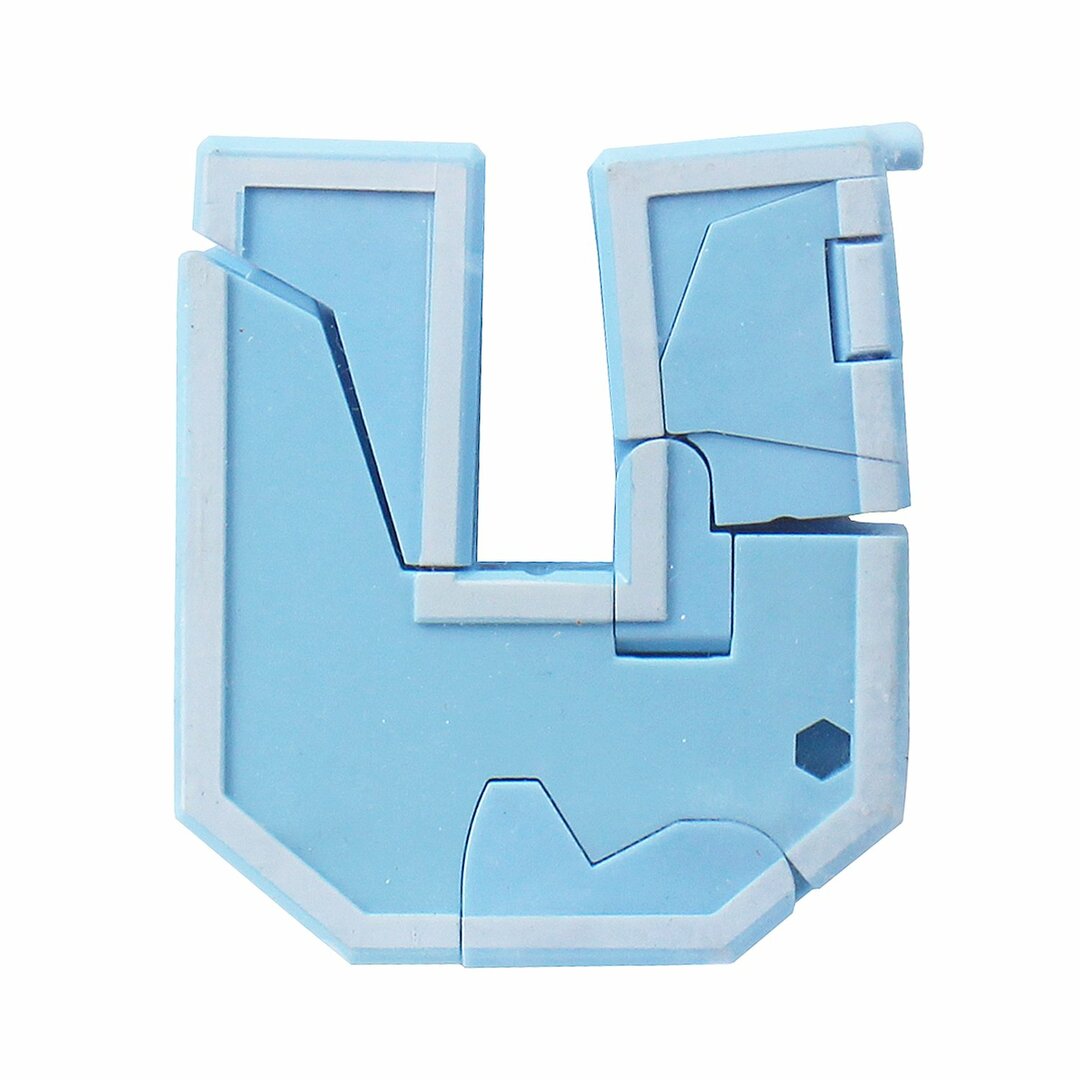What is the best chainsaw? Although gas-powered models are more powerful, electric ones are becoming increasingly popular because they are safer, lighter in weight and produce less noise. You may choose a cordless chainsaw if you do not have a power outlet at the site or need to work in hard-to-access spaces. Corded electric chainsaws have the advantage of not being limited by battery life. If you need a powerful tool, make sure that it is fitted with a motor of at least 13 amp. We believe that Makita UC4051A 16 ″ Electric Chain Saw fit these criteria best.
Why have we chosen it? This product comes with a 14.5-amp motor that delivers powerful cutting. The tool runs at a speed of 2,900 FPM, allowing you to complete your job as fast as possible. For user’s convenience, the device is equipped with a rubberized grip while the chain is adjustable. This model is corded and has a built-in current limiter. In case you need to work for a long time, the product’s auto chain oiler will be very helpful. Besides, using a window located on the oil reservoir, you can see how much oil is left.
I've talked before about chainsaws, but I specialized in specific ones, which would only be meaningful to someone who knew really what they were looking for in one of these, but didn’t know exactly which brand was ideal for their needs and their budget. So, for the sake of completeness and accessibility, I'm going to broach this topic once more, in a more general way.
If you know you need a chainsaw, but your surety ends there, or you’re not sure if you need one or not, then you’ve come to the right place, because your questions will be answered here. I also want to drive home how dangerous these damn things can be, because like any power tool, carelessness can cost life and limb, quite literally. So, I have a couple more stories regarding chainsaws that I think drive this home.
I'll then look at one example of each of the three basic types of chainsaw, and we'll see what defines them, where their strengths and weaknesses are, and so on. First, though, let’s talk about the basics of how a chainsaw works, regardless of its power source or engineering.
CONTENT
- 1 TOP Chainsaws
- 2 Basic Chainsaw Mechanics: How Does It Work?
- 3 The Three Chainsaw Types
- 4 Are Chainsaws Dangerous? A little experience
- 5 7 Best Chainsaws Comparison Table
TOP Chainsaws
1. Makita UC4051A 16 ″ Electric Chain Saw
I’ve made no effort to hide how much I like Makita’s tools. They’re really the crème of the crop, as the old phrase goes. A lot of people haven’t heard of Makita, and that’s not for a lack of quality, but because of their quality and the cost of the things. They're not cheap, though this particular one is very affordable as Makita goes.
Makita isn’t one of those brands you see in armchair gardener or craftsmen’s garages, or really on a lot of general jobsites. This is because again, they’re expensive, and the owners of Makita tools don’t like the idea of inexperienced people roughhousing their Makita tools, nor possibly running off with them.
So, this is our electric offering, though Makita offers chainsaws in all three categories. In fact, they offer a plethora of variations within each category at that. This is a good chainsaw, and while it’s not as powerful as a gas-powered chainsaw, there’s not much this thing won’t cut with a little patience and determination. I’ve used one of these to take down a redwood tree. Not a sequoia, I don’t know how anything cuts those down, but a regular redwood is still a monster of a tree, and my Makita electric chainsaw felled that thing in a few hours.
Features
- Size: 16 "
- Power: Corded electric.
- Blade Type: Carbon steel.
- Noise Level: About like a vacuum cleaner.
- Weight: 14lbs.
- Voltage: 110v
Performance
I can’t overstate how well-made these Makita chainsaws are, regardless which category you’re looking for. This is pretty much the mid-range by way of power. It’s not as strong as a gas chainsaw, but it’s a lot more powerful and efficient than a battery-powered version.
If I had one complaint about this chainsaw, it's that the blade can be a bit fiddly to replace, though I’ve yet to see a chainsaw that was truly as easy to handle in this regard, as the box would claim.
It does tend to get the oil a lot hotter than it ought to as well, but that’s probably just a byproduct of the power this motor packs, which is significant compared to a lot of corded chainsaws. The cord is pretty long, about 20 feet give or take, which combined with a nice 100ft extension cord, gives you a lot of range to tackle that pesky fence row, cut firewood, whatever you need.
Pros and Cons
Pros:
| Cons:
|
Conclusion
If you don’t want a gas chainsaw, but want some power nonetheless, you want this one, period.
Makita: Check the current price
2. Remington RM4216 16-inch Gas Powered Chainsaw with Carrying Case
Remington is another brand that’s gotten a lot of praise over the years, and yes, it’s the same company that produces the firearms with which the name is more heavily associated. I would say that Makita is the better company overall, having made their name in tools, and having stayed with tools.
That’s not to say Remington is a slouch - they make some really tough chainsaws, and this gas-powered option right here is no joke. For a gas saw, it’s surprisingly fairly light (which means it’s still balls-heavy compared to electric or battery), and it's very, very powerful, slicing through the toughest wood like a hot knife through butter.
Something that I’ll give Remington over Makita is the form factor and user experience by way of build quality is considerably sturdier and tougher-seeming overall. This thing feels like it could survive a battlefield, and you know what, I bet it actually could.
I haven’t used this particular model more than once, but I’ve used my share of Remington gas chainsaws in the past, in California where trees are made of titanium and granite seemingly, and I felt like freaking Hercules slicing through everything with it, resistance was futile!
Features
- Size: 16 "
- Power: Gasoline.
- Blade Type: Carbon steel.
- Noise Level: It's a gas-powered chainsaw. It's really darn loud.
- Weight: 22lbs.
- Voltage: N / A.
Performance
I’ve pretty much described how powerful this chainsaw is, and really, there’s not that much to say about gas-powered chainsaws in the 21st century, they’ve about reached their peak of engineering until they switch over to ethanol or something, which you know is coming sooner rather than later. So, I'd like to talk about my biggest gripe with this chainsaw as well as other gas-powered equipment larger than a tractor mower.
You guessed it - pull-cords. Why are these a thing in the 21st century? I don’t understand why chainsaws, weed eaters, lawn mowers, compressors and pressure washers still use this idiotic approach. A compact solenoid, a small battery (heck, 12v would suffice) to turn it over, and an ignition button would work just fine, and this has been done for some generators that’re smaller than this chainsaw.
This is a big reason why people are hesitant to use gas-powered chainsaws, and it's a lost opportunity for Remington to make the best one ever.
Pros and Cons
Pros:
| Cons:
|
Conclusion
If you want the most power you can get, noise and nuisance be damned, this is what you want, for sure.
Remington: Check the current price
3. DEWALT DCCS620B 20V MAX XR Compact 12 in. Cordless chainsaw
I may not have been entirely fair to DeWalt in the past, having said they weren’t bad, but weren’t anything amazing either. Well, to an extent, I still stand by this opinion, but that’s with them standing in the shadow of Black + Decker, Remington and, of course, Makita.
DeWalt makes good tools, at least for the price, and for the demographic, they’re not bad at all. My complaint is really that they have longevity problems, which is an issue with any lower-cost tool range, and they feel, for lack of better terms, “soft”, like they could break.
However, to their credit, they’re a lot tougher and more durable than this impression would initially indicate, and the one I have, which I use for specific circumstances, has lasted longer than I expected, though it is on its last legs.
DeWalt tools are ideal for people who, maybe once a month or maybe once a week, need to do some property maintenance, and with proper care and not overdoing it, you’ll get your money’s worth out of them in the long run. So, is it a good chainsaw though?
Features
- Size: 12 "
- Power: Battery.
- Blade Type: Standard steel.
- Noise Level: It’s about on par with a mixer or a battery-powered leaf blower.
- Weight: 8.8lbs.
- Voltage: 20v.
Performance
This is a battery-powered chainsaw, which means it’s not all that powerful. If you want to cut down a large tree, you’re going to have to recharge the saw multiple times, and you’ll want to pick fair weather because you’ll be out in it for quite some time, for sure.
The braking in this one is pretty good though, and for what I use it for - trimming limbs and overgrowth - it works quite well. The nice thing about it is that it's very light weight, so it’s not exhausting to use like a heavier chainsaw tends to be.
It gets decent usage out of a charge, I’ve used it for a few hours at a time, but that’s cutting things that aren’t ridiculous in their weight or resistance. The battery pack is a standard DeWalt battery pack, which means many other DeWalt tools can share a charger and battery set, and it does charge very fast. Be careful, though, these batteries can be a bit unstable at times.
Pros and Cons
Pros:
| Cons:
|
Conclusion
For light-weight groundskeeping and the like, this is a good budget solution worth your while.
DEWALT: Check the current price
Basic Chainsaw Mechanics: How Does It Work?
A chainsaw, as the name would suggest, is a saw that utilizes a chain. It's not the typical “interlinked loops of metal” style of chain, but rather thin, double-sided, riveted pieces of metal that hinge on both ends to other pieces. One, two, sometimes three shark tooth-style, curved blades protrude from these chain segments, though variations on the blades for angles and the like also exist.
This chain is usually made of steel, though aluminum and titanium variants do exist. Blades may just be hardened carbon steel, or diamond-tipped if you really want to go big or go home.
This chain wraps around an oblong mechanism around which it spins in a caterpillar-track motion similar to bulldozer tracks or conveyor belts. This creates a quite vicious cutting surface that basically gouges and chews away at the material.
This isn’t a high-precision saw, compared to a jigsaw, band saw or circular saw, though a skilled user can be precise within reason - lumberjacks and groundskeepers can cut ridiculously precise wedges and sections with one of these, but it takes a lot of skill and practice.
The Three Chainsaw Types
Chainsaws can vary a little in blade design and case form factor, but there are basically three types of chainsaws, distinguished by their power source. They are superior to one another in specific circumstances, but none of the three is overall better. It simply depends on what you need, and whether or not the limitations / downsides of a given power source are, which one will be the best for your needs.
Let’s look at the three types here.
Gas-Powered Chainsaws
These are the oldest type of chainsaw, and the ones that most people are familiar with. They possess a compact one or two cylinder motor, and usually start with a pull cord. They make the classic noise associated with chainsaws, as the other two, while not silent, are less boisterous.
Using internal combustion, these are the most powerful chainsaws, as few portable electric devices can pack the mechanical power of a gas engine. Electric motors that size can do it, but only if you have a high-yield generator or a nuclear power source, which I really hope you don’t have.
Of course, there are downsides to these. Gas motors are much more complex, which means a lot more can go wrong with them. Their gas reservoir and the engine combine to make a very heavy tool. They produce a lot of exhaust and heat, which can be bad for you, bad for the environment, and even burn you.
They’re very loud, as I said a moment ago, and pull-cord ignition is just the worst thing ever, and should probably stop being implemented in things. I'll be sharing a story about how dangerous this can be shortly.
Electric chainsaws
Electric chainsaws utilize corded power, running on either 110v or 220v in North America, with variations in Europe and Asia where voltages are weird. These use a high-yield electric motor which sounds more like a leaf blower or a loud mixer. They are not as powerful as a gas chainsaw, roughly 2 / 3-1 / 2 the power on average, though they’re getting stronger as more efficient motors are developed.
Along with the diminished power, they also tether you to a cord, which can cause tripping hazards. However, they’re quieter, lighter, and they just go when you push a button, no pulling cords to be faffed with.
Battery-Powered / Cordless Chainsaws
Battery chainsaws are electric chainsaws that make avail of a battery pack very similar to what a cordless drill or impact wrench uses. In fact, some of these are interchangeable. This is a lithium-ion rechargeable battery.
Battery-powered chainsaws are slightly heavier (due to capacitor banks, transformers and the battery) than corded chainsaws, but they’re still a hell of a lot lighter than the gas-powered classic concept.
These are on average the weakest chainsaws, given there’s only so many joules of energy that can be delivered immediately from a battery, so these aren’t going to readily chop down a large tree. I say readily - with patience and a couple recharges, I’ve done it. I don’t recommend that though.
Are Chainsaws Dangerous? A little experience
So, now that we know the three types, allow me to extoll, via experience, the dangers inherent to these. The blade is dangerous on all three - any one of these could take a limb off, trust me. But, specifically to each one, here are some unique dangers.
- Gas - I nearly lost a foot once, wrestling with the stupid pull-cord on a gas-powered chainsaw. Watch where that blade train is while you wrestle with that.
- Electric - This one’s dangers are entirely with the cord, as far as specifics. I’ve mentioned my friend taking herself off a ladder with the cord, and I’ve had one take my feet out from under me too.
- Battery - The specific danger with these comes from batteries being unstable. I’ve had a battery explode with one of these, and I needed stitches from that.
7 Best Chainsaws Comparison Table
1
Makita
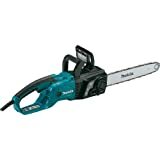
Chain Saw, Electric, 16 in. Bar
2
Remington
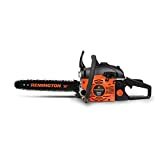
Remington RM4216 16-inch Gas Powered Chainsaw with Carrying Case
3
DEWALT

DEWALT DCCS620B 20V MAX XR Compact 12 in. Cordless Chainsaw (Tool Only)
4
Husqvarna
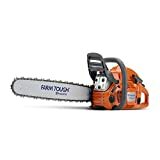
Husqvarna 20 Inch 455 Rancher Gas Chainsaw
5
WORX
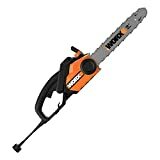
WORX WG304.1 Chain Saw 18-Inch 4 15.0 Amp
6
DEWALT
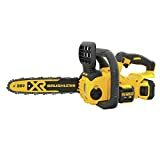
DEWALT DCCS620P1 20V MAX Lithium-Ion XR Brushless Compact 12 in. Cordless Chainsaw Kit (5AH)
7
Husqvarna
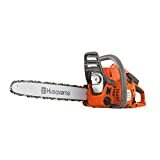
Husqvarna 120 Mark II 16 in. Gas Chainsaws, Orange / Gray

